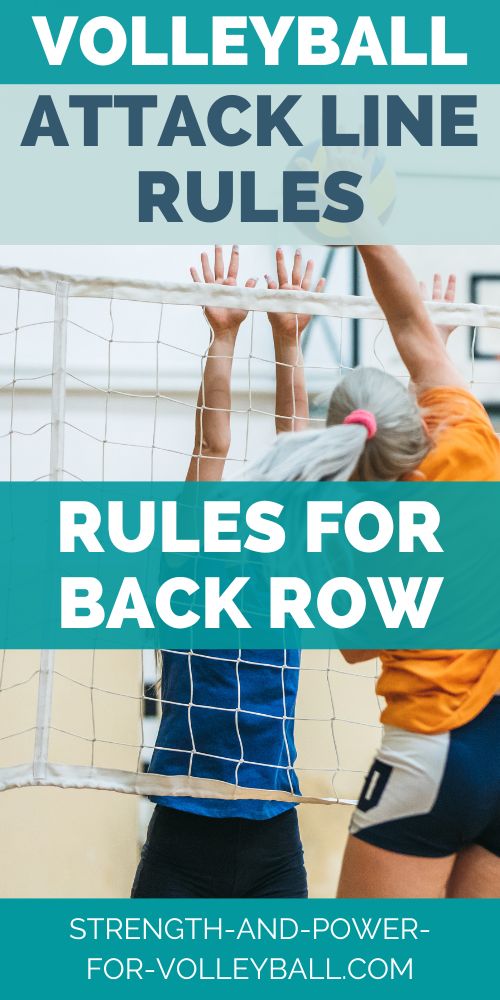Attack Line in Volleyball
Back Row Player & Libero Rules
Attack line in volleyball and everything you need to know about the attack line.
The attack line is the line that is 3 meters (about 10 feet) from the centerline. There is an attack line on each side of the court.
The attack line is used mainly for 3 things.
Judging Back Row Attacks
There are 6 spots on the court. Each team has 3 players on the front row and 3 players on the back row.
The front zone is the area from the attack line to the center line.
Front row players can legally attack the ball from anywhere on their side of the court.
Back row players are restricted on how they can attack the ball.
If when making contact with the ball, if the entire ball is above the top of the net, there are restrictions on when the back row player can attack.
Basically, when the entire ball is above the top of the net, the back row player must be in the back court or take off the ground from beyond the attack line.
The attack line is needed for judging back row attacks. The back row players can't attack a ball in the front zone. For a back row player to legally attack a ball, the back row player must have the feet behind the attack line (if at contact, the entire ball is above the top of the net).
Common Mistakes in Applying the Rule
It's not true that if a back row player jumps from inside the attack line and spikes the ball, then it's automatically an illegal back row attack. This isn't always true because it depends on where the ball is in relation to the top of the net. For example, some shorter players can jump and will never contact the ball when the ball is entirely above the net. For these players, they can jump and hit and should never be called for an illegal back row attack.
Libero Setting
There are situations where it's illegal for the libero to hand set an attacker. When the libero is in the front court, if the libero uses finger action to set the ball to an attacker, it's illegal for the attacker to attack the ball (contacting when the ball is entirely higher than the top of the net). This is true for front row attackers and back row attackers. The libero can legally perform this hand set from the back court.
For example, as long as the libero doesn't have part of the foot on or inside the attack line, then it's legal for the libero to hand set the ball to an attacker.
If the libero were to jump set from beyond the attack line, hand set the ball, and land inside the front court, this is legal.
The play isn't illegal until the attack hit is completed. The hit isn't completed until the ball completely crosses the net or the ball is legally blocked by the opponent.
As a side note, it's also illegal for the libero to attack the ball at any time (when the ball is entirely above the top of the net). Again, the play isn't illegal until the opponent legally blocks the ball or the ball completely crosses the net.
Substitution Zone - Attack Line in Volleyball
The area from the attack line to the center line is the substitution zone. This is the area a player from the bench enters when wanting to substitute into the match.
When a player enters the substitution zone, the referee blows the whistle then administers the substitution.
The libero replaces back row players. These replacements aren't substitutions.
For the libero to enter and come out of the match, the libero must cross the area in the back court. This is the area from the attack line to the end line. If the libero crosses into the court inside the attack line from the bench, the referee will usually issue a warning.
Coaches and the Substitution Zone
Coaches aren't allowed to enter the substitution zone at any time. To communicate with the team or referee, the coach can come up to the attack line, but shouldn't ever cross the line. Between sets, the coach will cross the attack line to turn in the team line up. There's also time to enter the substitution zone while switching sides of the court between sets.
If a coach is caught entering the substitution zone, the referee will issue a warning. Depending on the situation, the referee may issue a sanction such as a yellow or red card.
If you enjoyed these attack line in volleyball tips and would like to keep them close to you at any time, just save this pin to your Pinterest Volleyball Training Board.
